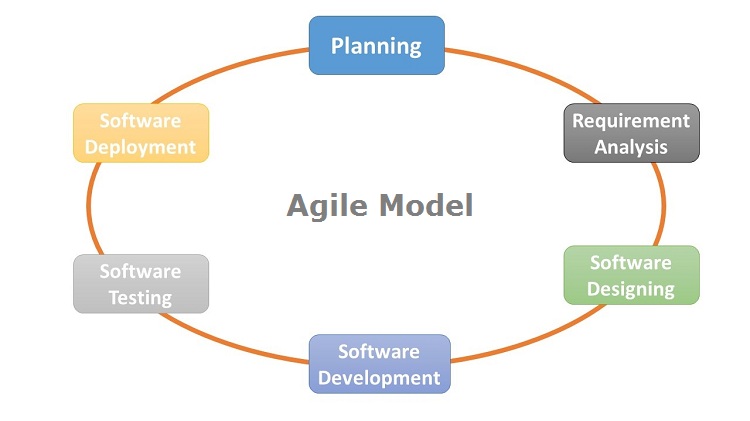In this tutorial you will learn about the Agile Model and its application with practical example.
Agile Model
The Agile SDLC model is a hybrid of iterative and incremental process models, with a focus on process adaptation and customer satisfaction through the quick delivery of functional software. Agile methodologies divide a product into small incremental builds. Iterations of these builds are available. Each iteration normally lasts between one and three weeks.
Every iteration incorporates cross-functional teams working on many areas at the same time, such as:
- Planning
- Requirements Analysis
- Design
- Development
- Unit Testing
- Deployment

At the end of each iteration, a functional product is shown to the client and key stakeholders. According to the agile model, each project must be handled differently, and current techniques must be customized to best meet the project objectives. Tasks are grouped into time boxes (short time spans) in Agile to provide particular features for a release.
The technique is iterative, with each iteration delivering a viable software build. In terms of features, each build is incremental; the final version contains all of the features requested by the client.
The Agile thought process began early in software development and grew in popularity over time owing to its flexibility and adaptability. Rational Unified Process (1994), Scrum (1995), Crystal Clear, Extreme Programming (1996), Adaptive Software Development, Feature Driven Development, and Dynamic Systems Development Method (DSDM) are the most prominent agile techniques (1995). Following the publication of the Agile Manifesto in 2001, these are now generally referred to as Agile Methodologies.
Principles Of Agile Model
The Agile Manifesto principles are as follows:
- Individuals and their interactions Self-organization and motivation are key in agile development, as are interactions like as co-location and pair programming.
- Working software Demonstrating working software is seen to be the greatest way to communicate with clients in order to understand their needs, rather than relying just on documentation.
- Customer cooperation because needs cannot be entirely acquired at the start of the project owing to a variety of variables, constant customer engagement is critical to obtaining correct product requirements.
- Agile Development is focused on rapid reaction to change and continuous development.
Agile employs an adaptable approach in which there is no precise planning and there is simply clarity on future tasks in terms of what features must be produced. There is feature-driven development, and the team constantly responds to changing product needs. The product is tested regularly during release iterations, reducing the likelihood of severe failures in the future.
The backbone of this agile process is customer interaction, and open communication with little documentation is typical of an agile development environment. Agile teams collaborate closely with one another and are frequently based in the same geographical region.
Benefits of the Agile Model
The following are the benefits of the Agile Model:
- It is a practical approach to software development.
- Encourages collaboration and cross-training.
- Functionality can be quickly built and shown.
- The required resources are little.
- Suitable for fixed or fluctuating needs
- Provides partly workable solutions as soon as possible.
- A good model for surroundings that change on a regular basis.
- There are few regulations, and documentation is simple to implement.
- Allows for concurrent development and delivery within a larger planned framework.
- There is little to no preparation necessary.
- Simple to use.
- Allows developers to be more creative.

